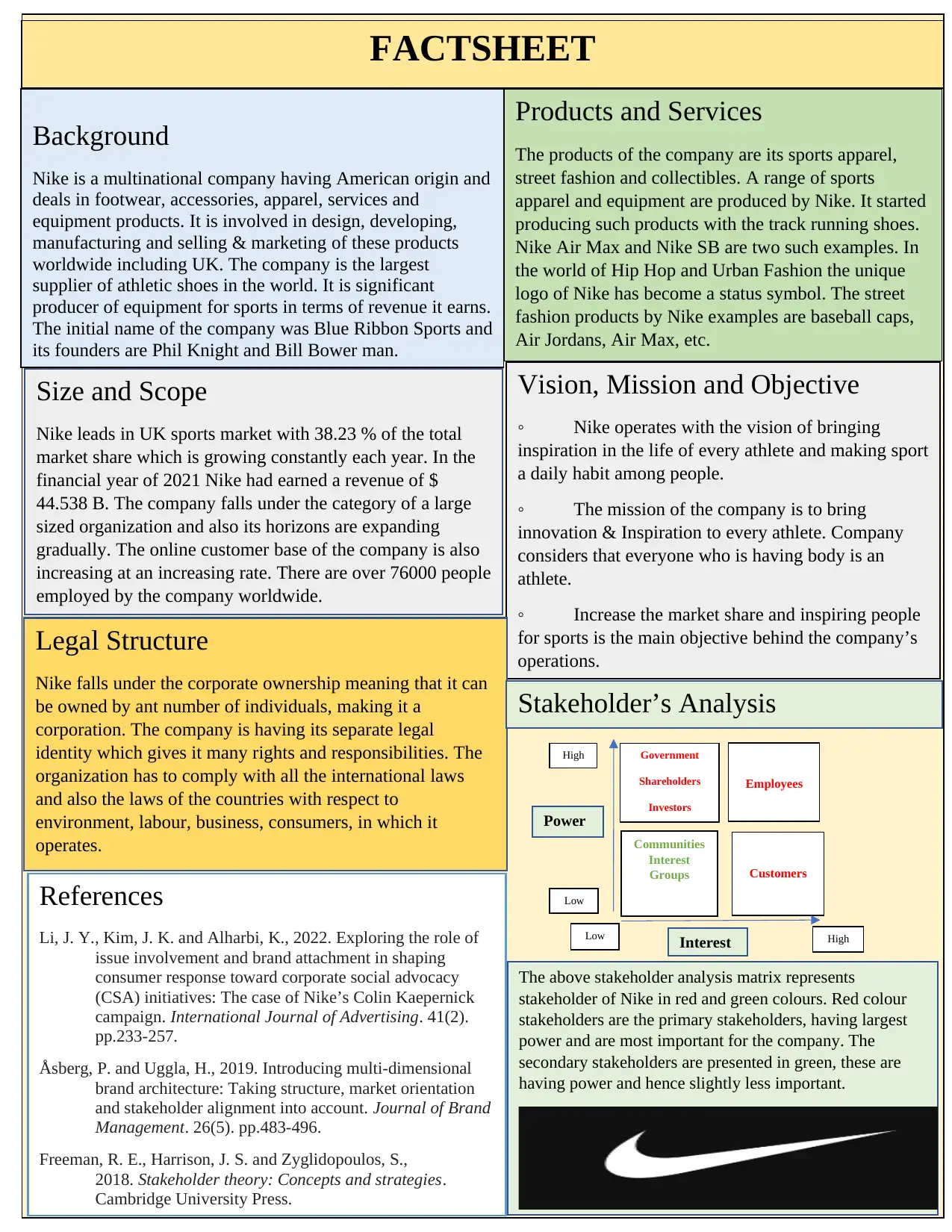Nike Factsheet: Nike's Business Model and Stakeholder Relationships
VerifiedAdded on 2023/06/05
|1
|617
|403
Report
AI Summary
This report provides a detailed factsheet on Nike, a multinational corporation specializing in footwear, apparel, and sports equipment. It outlines the company's background, including its origins as Blue Ribbon Sports and its founders, Phil Knight and Bill Bowerman. The report details Nike's products and services, which range from sports apparel and equipment to street fashion items, highlighting the brand's significant presence in the sports and urban fashion markets. It also covers the company's size and scope, noting its leading position in the UK sports market with a 38.23% market share and its substantial revenue of $44.538 billion in 2021. The factsheet describes Nike's vision, mission, and objectives, emphasizing its commitment to inspiring athletes and promoting sports as a daily habit. Furthermore, it explains Nike's corporate ownership structure and its adherence to international and local laws. Finally, the report includes a stakeholder analysis matrix, categorizing stakeholders based on their power and interest levels, identifying key stakeholders such as the government, shareholders, employees, and customers.







![[object Object]](/_next/static/media/star-bottom.7253800d.svg)